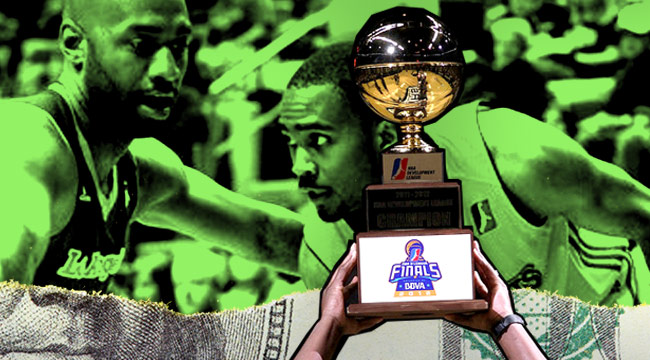
It’s easier to win money playing various lottery scratch-offs at your local bodega than it is to make the NBA. Only around 450 players a year get a roster spot, and you can tack on another 50 to 100 who float along the periphery of the league trying to secure something long term with a successive mix of 10-day contracts and NBA Developmental League appearances. Except, that latter deal with the D-League (NBDL) remains grossly below what those same players can make overseas.
This offseason, the NBA reportedly did away with the lowest-tiered salary among their D-League teams. In 2015 and this past D-League season, there were three levels of salary: $13,000, $19,000 and $25,500, and each team had a salary cap of $173,000.
But a source told Fansided’s excellent Upside Motor that payout will be altered in 2016-17. There will only be two tiers of salary next season: $19,500 (B-Level) and $26,000 (A-Level). Plus, the cap will go up to $209,000.
That’s not nearly enough, though.
The problem stems from what these players are getting when they go overseas to Spain or Greece or Italy or China or any of the international leagues that can offer hundreds of thousands of dollars and sometimes even millions for players on the cusp of a full-time NBA gig, or treading water well after their prime. If they’re good enough to get a look in the D-League, they can absolutely make over six figures somewhere outside America. That gulf is a problem, especially as the D-League grows and becomes the de facto minor league for professional basketball in the United States.
Despite the difference in salary, many players still stay in the U.S. for the D-League season, which runs for 50 regular season games — mostly on the weekends, with every team playing 24 home games each year — from late November to early April. The playoffs start right after. On the calendar, it’s a little less time than it takes the NBA to play 82 games before their own playoffs start.
That’s a long time to commit to a D-League team for a salary that’s less than some regular NBA web loggers take home before taxes. It’s barely enough to survive on your own (let alone with a family), and it stands in even starker relief when you’re talking about what these players might be making elsewhere in the world.
This isn’t new, either. Ron Howard, a D-League mainstay who we talked to a few years ago for our old “What’s My Name” magazine column, held the all-time D-League scoring record for a few months in 2014 before going overseas to play in the Korean Basketball League (KBL).
Now look at the top earners from last season in the D-League. It’s not very much, even with the influx of NBA money from 10-day deals for those top earners.
Conversely, back in early 2015, one Chinese basketball player was making more than a million a year. Yes, it was former NBA flameout, Yi Jianlian, who allegedly signed an incentive-laden deal with the Lakers this summer, but it shows a clear disparity, and it forces players into an uncomfortable choice they shouldn’t have to make anymore.
The dream for D-Leaguers is a tryout in the NBA that leads to a long-term deal. But if you’re not playing in the D-League, you’re not on the radar of many NBA general managers, who still don’t have the resources or time to watch a random Turkish League game. There’s less of a chance for a borderline NBA player to make the league if they’re making better money playing overseas. This is a fissure in the NBA minor leagues that could doom the structure they’re trying to put in place.
For every Hassan Whiteside, Rafer Alston, Chuck Hayes, Dahntay Jones, Jamario Moon, Smush Parker, Von Wafer and C.J. Watson, there are hundreds of other guys out there with similar talents and skills who haven’t even sniffed an NBA hardwood because they’ve played in obscurity somewhere outside the United States. Adam Silver and company want to funnel the best players to the NBA, so it’s in their interest to offer a competitive salary in the D-League despite the fact they’re not exactly selling a ton of tickets or any real merchandise at that level.
There are still only 22 D-League teams with three new ones coming next year (the Nets, Hornets and Bulls are all getting one). The belief is that the salary in the Developmental League will increase to more competitive levels once all 30 teams have a D-League outfit. For now, players are stuck wallowing near the poverty line, picking up a second job, or hoping some of their overseas exploits catch the eye of a worldly executive if they want to make the NBA after being passed over in the draft or cut during tryouts.
It should be easier, but is the NBA — who controls all D-League contracts — gonna cough up the dough?






